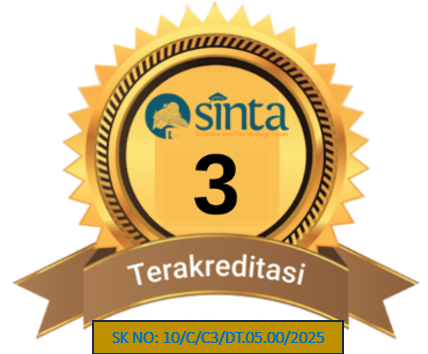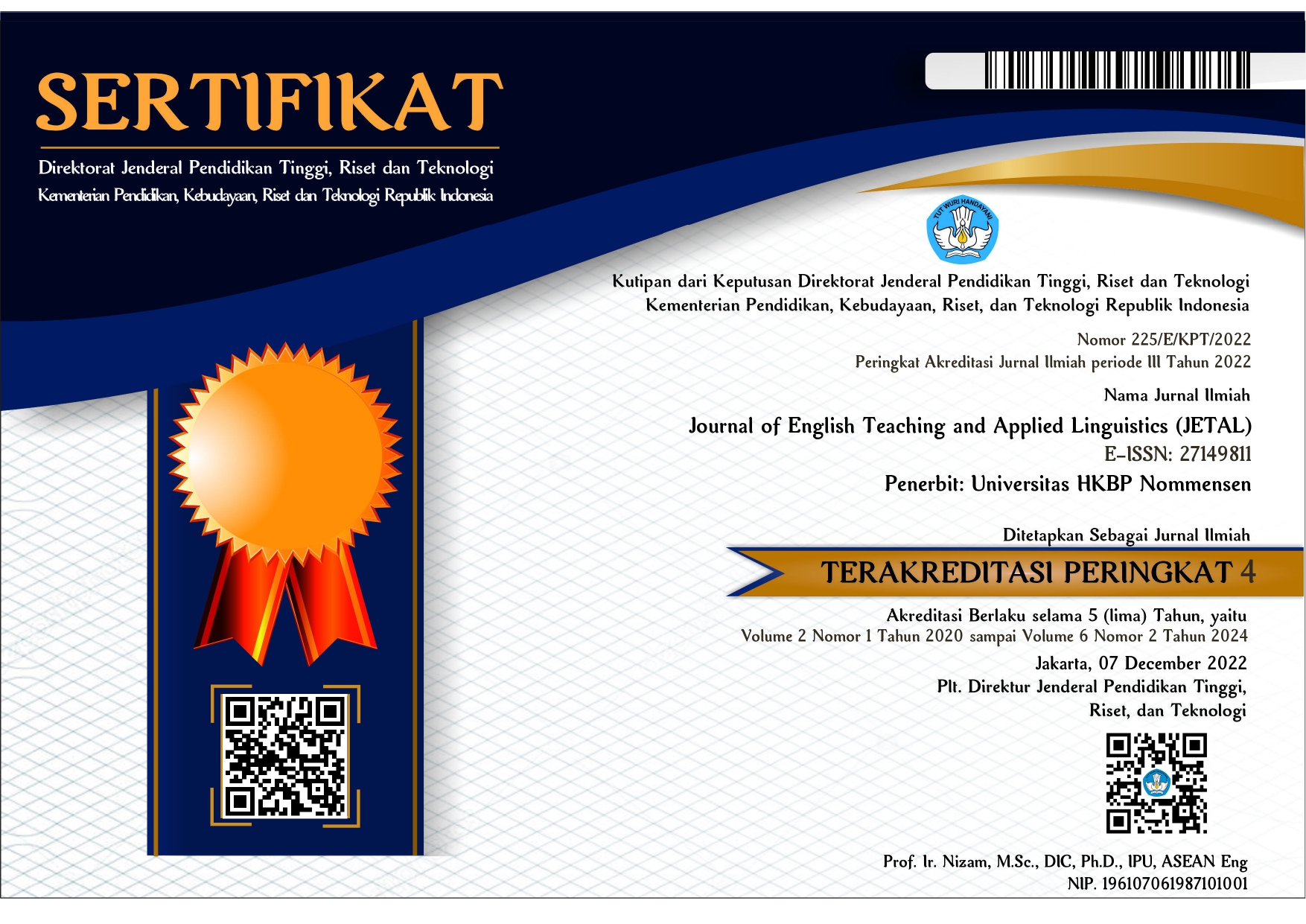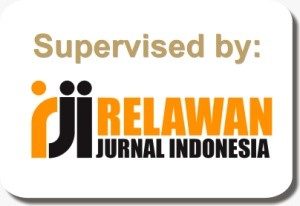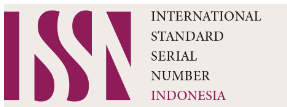The Effectiveness of the Duolingo Application in Learning English Vocabulary for High School Students
Abstract
The use of learning media is one of the important things in the era of increasingly rapid technological development. It makes learning interesting and effective. An effective English language and teaching media in this new era is Duolingo. It provides methods of learning while playing games, which certainly attracts the attention of language learners. The effective use of Duolingo application is described based on the result of pretest and posttest comparison. The research method is quantitative based on the participants’ scores. The test is vocabulary test which addressed into the students of class XII SMA N 1 PERUMNAS BATU 6 as the participants. Data analysis indicate that Duolingo application is an effective English language and teaching media. The average score in pretes is 64. 53 and it becomes 91.13. This research concluded that Dulingo help the participants to improve English vocabulary knowledge.
References
Darmadi, Hamdani (2014). Metode Penelitian Kualitatif. UNIMED.
Enayat, M. J. (2021). Vocabulary size and depth as predictors of second language speaking ability. System, 99. https://doi.org/10.1016/j.system.2021.102521
Fadić, M. N. C. (2020). Frequent vocabulary, lexical richness and stereotypes of reading in training teachers. In Logos: Revista de Linguistica, Filosofia y Literatura (Vol. 30, Issue 1, pp. 69–85). https://doi.org/10.15443/RL3006
Fitri. Y.. Melani. M. de Roza, V. (2023). The Effect Of Using Duolingo Application Toward Students' Vocabulary Mastery At The Second Grade Of SMPN 1 Koto Besar.
Gaffas, Z. M. (2024). Using social media platform X to enhance student medical English learning: an attempt based on design-based research (DBR) in a medical English for specific purposes (ESP) course. Asian-Pacific Journal of Second and Foreign Language Education, 9(1). https://doi.org/10.1186/s40862-024-00281-1
Gatev, D. (2024). The Terminological Vocabulary in Teaching English for Specific Purposes from the Perspective of Students and Lecturers. Analele Universitatii Ovidius Constanta, Seria Filologie, 35(1), 262–277. https://api.elsevier.com/content/abstract/scopus_id/85200846877
Hsieh, Y. (2020). Effects of video captioning on EFL vocabulary learning and listening comprehension. Computer Assisted Language Learning, 33(5), 567–589. https://doi.org/10.1080/09588221.2019.1577898
Ishak Yuwono, N. (2024). The Effectiveness Of Duolingo Application Vocabulary At The Seventh Grade Students Of Junior High School (Vol. 1. Issue 1). https://englishtest.duolingo.com.
Jaelani A, dan Sutari R d. 2020. Students' Perception of Using Duolingo Application as a Media in Learning Vocabulary. Universitas Ibn Khaldun Bogor. Bogor English Student and Teacher (BEST).
Kusumadewi, H., & Widyastuti, M. (2023). The Effects Of Using Duolingo Towards Student’s Vocabulary Mastery https://doi.org/10.37640/jip.v15il.1683
Mondal, H. (2025). Artificial intelligence in academic writing: Insights from journal publishers’ guidelines. Perspectives in Clinical Research, 16(1), 56–57. https://doi.org/10.4103/picr.picr_67_24
Muhedeen, B. L., & Mahmood, A. R. (2023). Teaching English Speaking Skill at Preparatory Schools in Sulaimani City. Journal of Garmian University, 10(2), 1039–1045.
Sugiyono. (2019) Metode Penelitian Kuantitatif Kualitatif dan R&D.
Thornbury, S. (2002). How to teach vocabulary. Longman.
Tiara D A, Rahman A, dan Handrianto C. (2021). The Students' Perception About Use of Duolingo Application for Improving English Vocabulary. UIN Antasari Banjarmasin, Indonesia, Sultan Idris Education University, Malaysia. International Journal of Education, Information Technology and Others (IJEIT). (Vol. 4, No.4). DOI: 10.5281/zenodo.5775915
Yundayani, A., Suseno, M., & Herlina, E. ( 2023). A Duolingo-based English Language Skills Assessment: Through the Eyes of Vocational Students. Jurnal Ilmu Pendalikan (JIP) STKIP Kusuma Negara, 15(1), 9-23.
Zhu, X. (2022). Social media usage of chinese nursing students: Attitudes, motivations, mental health problems, and self-disclosure. PLoS ONE, 17(12). https://doi.org/10.1371/journal.pone.0277674

This work is licensed under a Creative Commons Attribution-ShareAlike 4.0 International License.
Authors retain copyright and grant the journal right of first publication with the work simultaneously licensed under a Creative Commons Attribution-ShareAlike 4.0 International License (CC BY-SA 4.0) that allows others to share the work with an acknowledgment of the work's authorship and initial publication in this journal.
Authors are able to enter into separate, additional contractual arrangements for the non-exclusive distribution of the journal's published version of the work (e.g., post it to an institutional repository or publish it in a book), with an acknowledgment of its initial publication in this journal.
Authors are permitted and encouraged to post their work online (e.g., in institutional repositories or on their website) prior to and during the submission process, as it can lead to productive exchanges, as well as earlier and greater citation of published work (See The Effect of Open Access).







